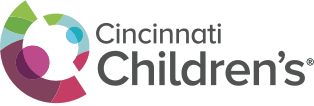Personalized Care Approach Gives Patients and Families a Voice in Their Treatment
As a mother of two children with significant upper airway issues, Cindy has spent years navigating the complexities of their care. Her twins, Philip and Emily, were born with severe respiratory conditions and required tracheostomies (surgical procedures to insert a tube into the trachea, or windpipe) just to breathe.
“Their airways were completely blocked,” Cindy said. “They had no way to breathe without assistance.”
Philip and Emily were diagnosed with subglottic stenosis—a narrowing of the larynx, or airway—and faced challenges their first few months of life.
“We felt there was more help out there somewhere,” Cindy said, noting Philip and Emily were always in and out of the hospital near their home in Georgia.
The Path to Cincinnati Children’s
As it turned out, one of the twins' doctors had completed her fellowship at Cincinnati Children’s and recommended Cindy seek a second opinion there.
From where Cindy lived in Georgia, Cincinnati Children’s was nearly 600 miles away. It initially seemed like a joke.
“When she said, ‘Cincinnati Children’s,’ I have this very clear memory of looking at her like she had three heads,” Cindy recalled. “I said, ‘Like in Ohio?’ And she said, ‘Yes, that’s where Cincinnati is located.’”
Once the initial shock faded, though, Cindy scheduled the appointment. She’s known it was the right decision ever since their first visit, when the twins were 1 year old.



